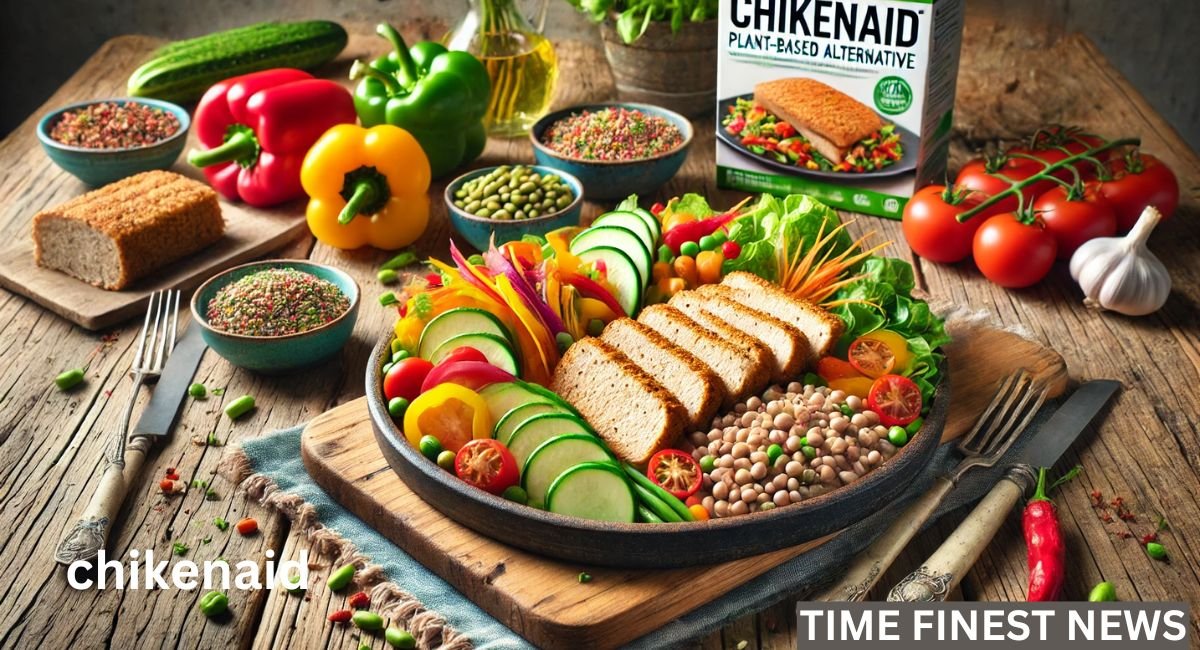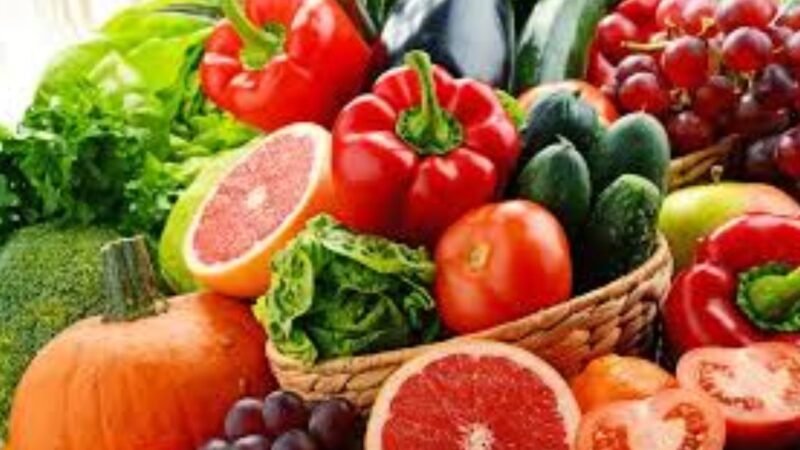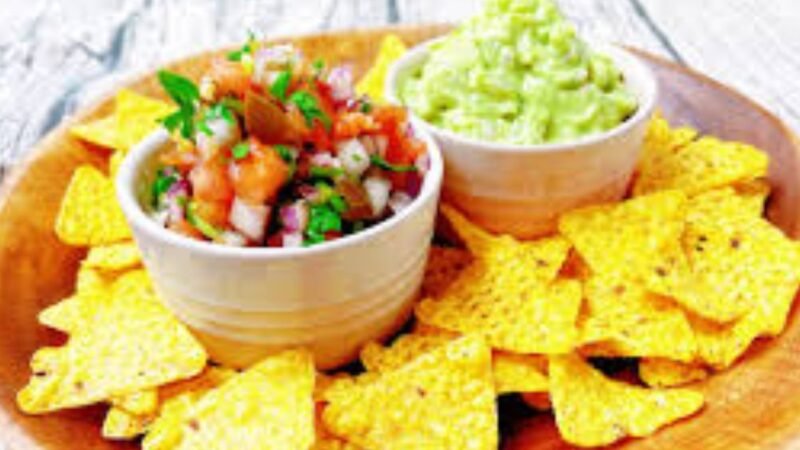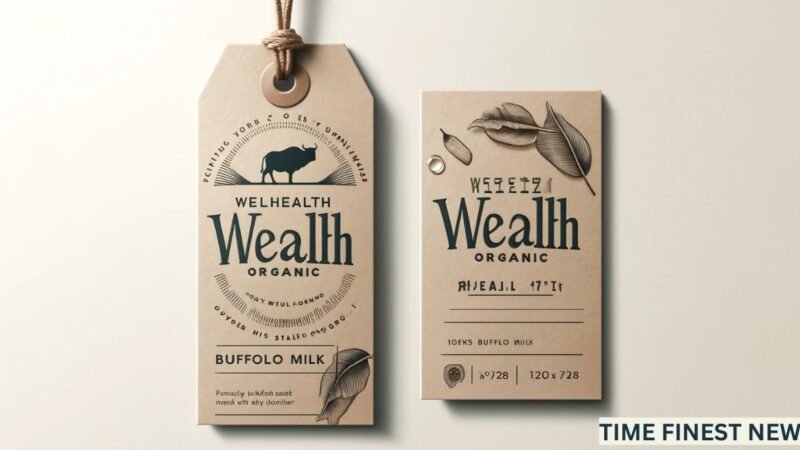Chikenaid: The Ultimate Guide to a Revolutionary Food Alternative

The Evolution of Chikenaid
Chikenaid’s journey from concept to reality is a fascinating tale of innovation and dedication. Developed in response to the growing demand for plant-based and alternative proteins, Chikenaid has redefined what we can expect from food alternatives. Unlike traditional meat substitutes, Chikenaid is designed to offer a familiar taste and texture while being entirely plant-based. This approach not only caters to vegetarians and vegans but also appeals to flexitarians and those looking to reduce their meat consumption without compromising on flavor.
The origin of Chikenaid can be traced back to the increasing awareness of the environmental impact of meat production. The creators recognized the need for a product that could provide similar nutritional benefits to chicken but with a much lower environmental footprint. Through extensive research and development, Chikenaid was born—a product that not only meets these criteria but exceeds them in many aspects.
Why Chikenaid is a Game-Changer
The introduction of Chikenaid into the market represents a significant shift in consumer options. With its unique blend of taste, texture, and nutritional profile, Chikenaid offers a compelling alternative to traditional chicken. The product is crafted to mimic the sensory experience of eating chicken, making it an easy switch for those accustomed to animal proteins.
Moreover, Chikenaid is designed with health in mind. It is fortified with essential nutrients, making it not just a meat substitute but a nutritious choice in its own right. For many consumers, the decision to incorporate Chikenaid into their diet is driven by a desire to make healthier choices without sacrificing taste.
What is Chikenaid?
Chikenaid is a plant-based food alternative designed to replicate the taste, texture, and nutritional benefits of chicken. The core idea behind Chikenaid is to provide a sustainable, healthy, and delicious option for those looking to diversify their protein sources. Unlike some other meat substitutes, Chikenaid is not just a facsimile of chicken; it is an improved, nutritionally superior version that fits seamlessly into a variety of diets.
The development of Chikenaid involved a meticulous process of ingredient selection, taste testing, and refinement. The goal was to create a product that not only tastes like chicken but also offers comparable nutritional value. This was achieved through a combination of plant-based proteins, natural flavors, and fortifying vitamins and minerals.
The Concept Behind Chikenaid
At its core, Chikenaid is built on the concept of sustainability and health. The environmental benefits of plant-based foods are well-documented, and Chikenaid aims to capitalize on this by providing a product that is not only good for the planet but also for the consumer. The choice of ingredients and the manufacturing process are both geared towards minimizing the carbon footprint, making Chikenaid a responsible choice for environmentally-conscious consumers.
The health aspect is another crucial pillar of Chikenaid’s philosophy. With increasing concerns about the health impacts of processed meats and high meat consumption, Chikenaid offers a clean, nutritious alternative. It is low in saturated fats, free from cholesterol, and high in proteins and fiber, making it a suitable choice for a balanced diet.
The Development Process of Chikenaid
Creating Chikenaid was no small feat. It required a multi-disciplinary approach, combining expertise from food science, nutrition, and culinary arts. The development process began with extensive research into the properties of chicken that make it a popular food choice. This was followed by the selection of plant-based ingredients that could replicate these properties.
One of the key challenges was achieving the right texture. Chicken has a unique fibrous texture that is difficult to replicate with plant-based ingredients. The solution came in the form of a proprietary blend of proteins and fibers that, when combined, mimic the mouthfeel of chicken. This blend is the heart of Chikenaid and is what sets it apart from other plant-based products.
The flavor profile was another critical aspect. Natural flavors were carefully selected and blended to create a taste that is remarkably similar to chicken. This attention to detail ensures that Chikenaid not only looks like chicken but also tastes like it.
Benefits of Chikenaid
The benefits of Chikenaid extend beyond its culinary applications. It offers a range of nutritional, environmental, and economic advantages that make it a compelling choice for consumers.
Nutritional Advantages of Chikenaid
Chikenaid is packed with nutrients that are essential for a healthy diet. It is a rich source of plant-based protein, making it an excellent option for vegetarians and vegans. Unlike traditional chicken, Chikenaid contains no cholesterol and is low in saturated fats, making it heart-friendly. Additionally, it is fortified with vitamins and minerals such as B12, iron, and calcium, which are often lacking in plant-based diets.
Another significant advantage is the presence of dietary fiber. Unlike animal-based proteins, Chikenaid provides a good amount of fiber, which aids in digestion and contributes to a feeling of fullness. This makes it a great option for those looking to manage their weight or improve their digestive health.
Environmental Impact of Chikenaid
The production of Chikenaid has a significantly lower environmental impact compared to traditional chicken farming. It requires fewer resources such as water and land and generates less greenhouse gas emissions. This makes Chikenaid an eco-friendly choice that supports sustainable food systems. By choosing Chikenaid, consumers can reduce their carbon footprint and contribute to the conservation of natural resources.
Economic Benefits of Chikenaid
Economically, Chikenaid offers several benefits. It is often more affordable than high-quality chicken, making it accessible to a broader range of consumers. Additionally, its longer shelf life reduces food waste, which is not only beneficial for the environment but also for consumers’ wallets. As demand for plant-based foods continues to grow, Chikenaid is positioned as a cost-effective and nutritious option.
How Chikenaid is Made
Understanding the production process of Chikenaid sheds light on why it is such a unique product. The manufacturing process involves a series of steps designed to ensure the highest quality and safety standards.
The Manufacturing Process
The production of Chikenaid begins with the selection of high-quality plant-based ingredients. These ingredients are then processed to extract proteins and fibers, which form the base of the product. The protein and fiber blend undergoes a process called extrusion, which helps achieve the desired texture. Extrusion is a method commonly used in food processing to create products with a specific texture and consistency.
After extrusion, the product is flavored and seasoned to mimic the taste of chicken. This is followed by a cooking process that ensures the product is safe for consumption. The final product is then cooled, packaged, and prepared for distribution.
Ingredients Used in Chikenaid
The ingredients used in Chikenaid are carefully selected to ensure they meet high standards of nutrition and safety. The primary ingredients include a blend of soy protein, pea protein, and wheat gluten. These proteins provide the necessary amino acids and contribute to the product’s texture. The product also contains natural flavors, spices, and a mix of vitamins and minerals to enhance its nutritional profile.
One of the standout features of Chikenaid is its clean label. It contains no artificial preservatives, colors, or flavors, making it a wholesome and natural choice. This focus on clean ingredients aligns with the growing consumer demand for transparency and health-conscious products.
Quality Control and Safety Measures
Safety and quality are paramount in the production of Chikenaid. The manufacturing facilities adhere to stringent quality control measures, including regular testing for contaminants and allergens. The entire process is monitored to ensure that the product meets all regulatory standards and is safe for consumption.
The company behind Chikenaid also invests in continuous research and development to improve the product’s quality and safety. This commitment to excellence ensures that consumers can trust Chikenaid as a reliable and nutritious food choice.
Chikenaid in the Market
Since its introduction, Chikenaid has quickly gained popularity among consumers looking for healthy and sustainable food options. Its availability and distribution have expanded, making it accessible to a wide audience.
Availability and Distribution
Chikenaid is available in various retail outlets, including major supermarkets, health food stores, and online platforms. The company’s distribution network ensures that the product is readily available to consumers across different regions. This widespread availability is a testament to the product’s growing popularity and consumer demand.
Consumer Reception and Popularity
The reception to Chikenaid has been overwhelmingly positive. Consumers appreciate the product’s taste, texture, and nutritional benefits. Many have praised it as a versatile and convenient alternative to chicken, suitable for a variety of recipes. The product’s popularity is also reflected in its strong sales and positive reviews online.
Pricing and Value Proposition
One of the key selling points of Chikenaid is its affordability. While plant-based products are often perceived as expensive, Chikenaid offers a cost-effective alternative without compromising on quality. Its competitive pricing, coupled with its nutritional benefits, makes it an excellent value proposition for consumers.
Chikenaid Recipes and Uses
Chikenaid’s versatility extends to its culinary applications. It can be used in a wide range of recipes, making it a staple in many households.
Culinary Applications of Chikenaid
Chikenaid can be used in almost any recipe to replace chicken. Whether it’s grilled, baked, stir-fried, or sautéed, Chikenaid delivers a delicious and satisfying experience. It works well in a variety of dishes, from salads and sandwiches to pasta and stir-fries.
Popular Recipes Featuring Chikenaid
Some popular recipes featuring Chikenaid include Chikenaid stir-fry, Chikenaid Caesar salad, and Chikenaid curry. These dishes showcase the product’s ability to absorb flavors and hold up in different cooking methods. Chikenaid nuggets and tenders are also popular choices, especially for quick and easy meals.
Creative Ways to Use Chikenaid
Beyond traditional recipes, Chikenaid can be used creatively in the kitchen. It can be incorporated into wraps, tacos, and even pizzas. For a unique twist, try using Chikenaid in place of chicken in your favorite international dishes, such as Chikenaid teriyaki or Chikenaid tikka masala. The possibilities are endless, and the product’s versatility encourages experimentation.
Chikenaid vs. Traditional Chicken
When comparing Chikenaid to traditional chicken, several factors come into play, including taste, nutrition, and cost.
Taste and Texture Comparison
Chikenaid is designed to closely mimic the taste and texture of chicken. While some consumers may notice subtle differences, the product has been praised for its realistic and satisfying experience. The texture is particularly notable, with many finding it comparable to the fibrous quality of real chicken.
Nutritional Comparison
Nutritionally, Chikenaid offers several advantages over traditional chicken. It is lower in calories and fat, and it contains no cholesterol. It is also a good source of plant-based protein and dietary fiber. These attributes make Chikenaid a healthier choice for those looking to reduce their intake of animal products.
Cost Comparison
Chikenaid is often more affordable than high-quality chicken, making it an accessible option for a wider range of consumers. Additionally, its longer shelf life reduces the risk of food waste, further enhancing its value.
The Future of Chikenaid
The future of Chikenaid looks bright, with exciting innovations and developments on the horizon.
Innovations and Future Developments
The company behind Chikenaid is continually working on new product innovations. Future developments may include new flavors, additional product lines, and enhanced nutritional profiles. The goal is to keep up with consumer trends and preferences while maintaining high standards of quality.
Potential Challenges and Solutions
As with any new product, Chikenaid faces potential challenges. These include market competition, consumer education, and supply chain logistics. However, the company is proactive in addressing these challenges through strategic marketing, partnerships, and continuous improvement.
Expanding Global Presence
Chikenaid has the potential to expand its presence globally. As the demand for plant-based foods grows worldwide, there is a significant opportunity for Chikenaid to enter new markets. The company’s commitment to sustainability and nutrition positions it well to meet the needs of consumers around the world.
FAQs
Is Chikenaid safe for all age groups?
Yes, Chikenaid is safe for all age groups, including children and seniors. It is a nutritious option that provides essential nutrients without common allergens like dairy or nuts.
How is Chikenaid different from other alternatives?
Chikenaid stands out due to its realistic chicken-like taste and texture, clean ingredient label, and nutritional benefits. It is also more affordable and widely available compared to some other plant-based alternatives.
Can Chikenaid be used in any recipe?
Yes, Chikenaid can be used in any recipe that calls for chicken. Its versatility makes it suitable for a wide range of dishes, from traditional to creative.
Where can I buy Chikenaid?
Chikenaid is available in major supermarkets, health food stores, and online retailers. Check the company’s website or your local grocery store for availability.
What are the storage requirements for Chikenaid?
Chikenaid should be stored in a cool, dry place. Once opened, it should be refrigerated and consumed within a few days. Freezing is also an option for extended storage.
How long does Chikenaid last?
The shelf life of Chikenaid varies depending on the product and packaging. Generally, it has a longer shelf life than fresh chicken, making it a convenient option for stocking up.
Conclusion
Chikenaid represents a significant advancement in the world of food alternatives. With its combination of taste, nutrition, and sustainability, it offers a viable option for those looking to reduce their meat consumption. As the market for plant-based foods continues to grow, Chikenaid is poised to become a staple in households around the world. Its positive reception and expanding availability underscore its potential to shape the future of food. Whether you’re a long-time vegetarian, a curious flexitarian, or simply someone looking to make healthier choices, Chikenaid offers a delicious and nutritious solution.





